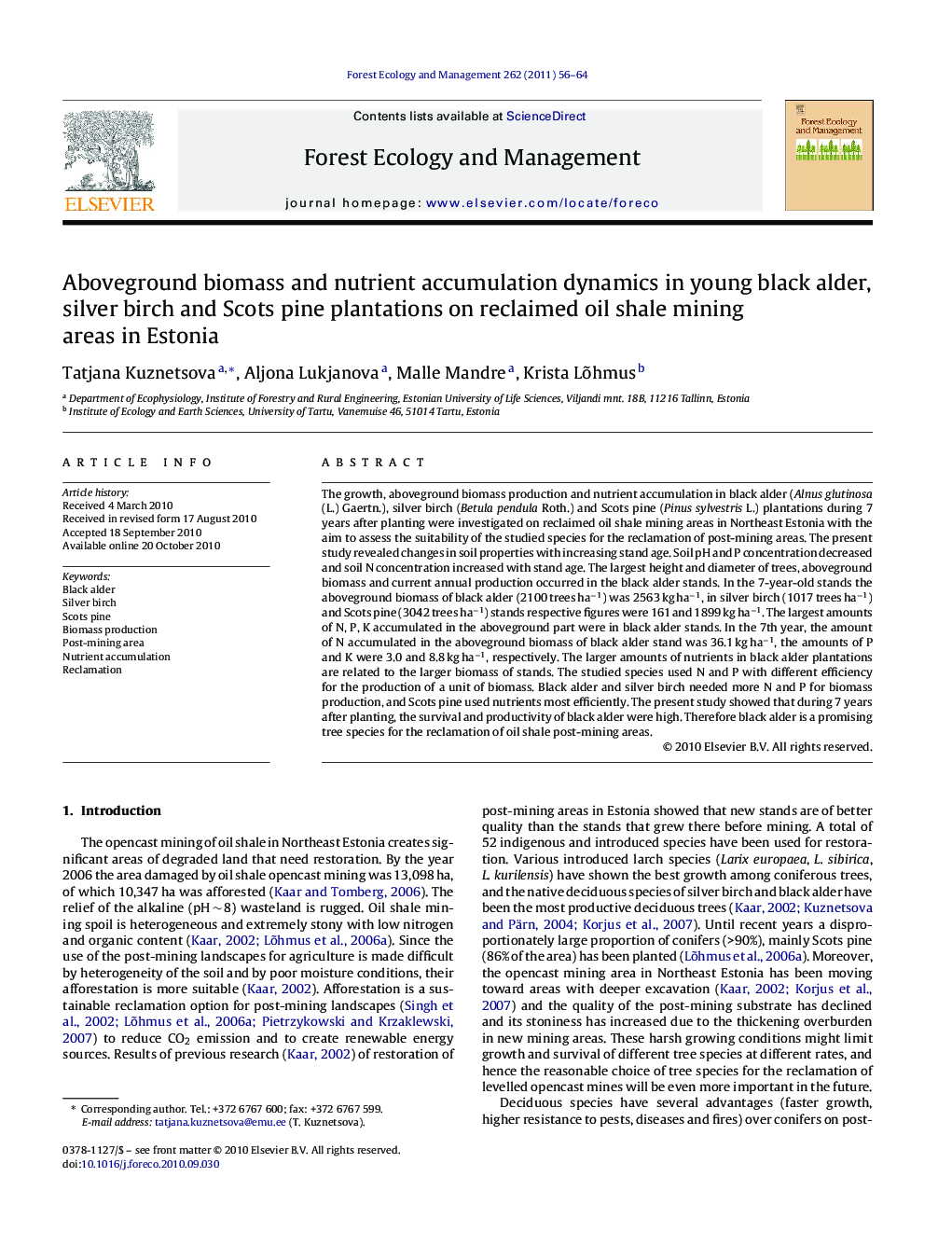| کد مقاله | کد نشریه | سال انتشار | مقاله انگلیسی | نسخه تمام متن |
|---|---|---|---|---|
| 87943 | 159273 | 2011 | 9 صفحه PDF | دانلود رایگان |

The growth, aboveground biomass production and nutrient accumulation in black alder (Alnus glutinosa (L.) Gaertn.), silver birch (Betula pendula Roth.) and Scots pine (Pinus sylvestris L.) plantations during 7 years after planting were investigated on reclaimed oil shale mining areas in Northeast Estonia with the aim to assess the suitability of the studied species for the reclamation of post-mining areas. The present study revealed changes in soil properties with increasing stand age. Soil pH and P concentration decreased and soil N concentration increased with stand age. The largest height and diameter of trees, aboveground biomass and current annual production occurred in the black alder stands. In the 7-year-old stands the aboveground biomass of black alder (2100 trees ha−1) was 2563 kg ha−1, in silver birch (1017 trees ha−1) and Scots pine (3042 trees ha−1) stands respective figures were 161 and 1899 kg ha−1. The largest amounts of N, P, K accumulated in the aboveground part were in black alder stands. In the 7th year, the amount of N accumulated in the aboveground biomass of black alder stand was 36.1 kg ha−1, the amounts of P and K were 3.0 and 8.8 kg ha−1, respectively. The larger amounts of nutrients in black alder plantations are related to the larger biomass of stands. The studied species used N and P with different efficiency for the production of a unit of biomass. Black alder and silver birch needed more N and P for biomass production, and Scots pine used nutrients most efficiently. The present study showed that during 7 years after planting, the survival and productivity of black alder were high. Therefore black alder is a promising tree species for the reclamation of oil shale post-mining areas.
Research highlights▶ Soil properties of post-mining area improved with stand age. ▶ The better survival, growth and largest biomass occurred in black alder stands. ▶ The largest amounts of nutrients accumulated in the aboveground biomass were in black alder stands. ▶ Deciduous trees needed more nutrients for biomass production; Scots pine used nutrients most efficiently. ▶ Black alder is a promising tree species for the reclamation of oil shale post-mining areas.
Journal: Forest Ecology and Management - Volume 262, Issue 2, 15 July 2011, Pages 56–64